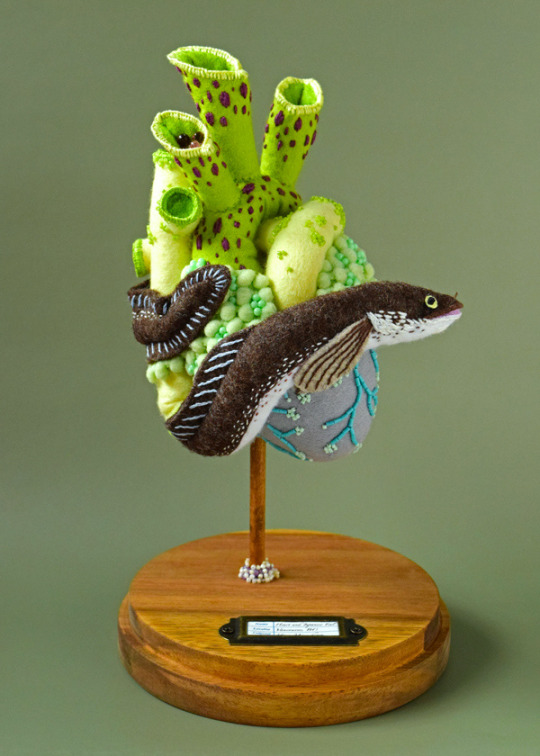Text

Mary Thomas (b. 1848 - 1905) aka Queen Mary was one of the leaders of the 1878 “Fireburn” labour riot on St. Croix, Danish West Indies (that’s right folks, Denmark 🇩🇰 was once part of the transatlantic slave trade along with most of the Western European girly-pops. The more you know 🌈)
Originally born in Antigua, Mary arrived in St. Croix in 1860s to work on the plantations. Although enslaved Africans in the Danish West Indies were officially free in 1848, a 1849 labour law fixed salaries & labour conditions. As a result, many workers left the island in search of better conditions.
To stop this, the government made it harder for workers to immigrate, demanding health certificates & charging passport fees. When workers demands were denied again in the Fall of 1878, this refusal sparked the Fireburn Riots, the largest labour riot in St. Croix. Thirty plantations were burned during the rebellion.
Known as “Queen Mary” because of her role as leader in the riots during one of the uprisings, she allegedly called for those unwilling to participate to be decapitated 😳 (Not unlike Harriet Tubman who was said to threaten to shoot weak-willed runaway slaves to stop them from going back to the plantation, as they escaped on the Underground Railroad)
In 2018, she was honoured with a 23ft tall statue called “I Am Queen Mary” by artists Jeanette Ehlers & La Vaugh Belle.
Nowadays, most people work through their dissatisfaction/frustration with their jobs/bosses through passive aggressive memes on social media (& I love laughing at them so please keep sharing ), but Mary stood on business, 10 toes down! By rallying her fellow workers, she risked it all to hit her oppressors exactly where it hurt, their pockets 😌
#my art#Mary Thomas#heroines of the caribbean#queen mary#st croix#us virgin islands#danish west indies#caribbean#caribbean islands#caribbean history#historical women#feminist icon#black history#Fireburn riots#labour rights#worker rights#rebellion#caribbean art#black women art#artists on tumblr
44 notes
·
View notes
Text

Paulette Nardal was a feminist writer & journalist from Martinique, who in the 1930s helped developed the literary movement Negritude as a response to the racism she and others from across the Black Francophone diaspora received in France.
Being the black literacy baddie that she was, Paulette was the first black women to study at the Sorbonne in 1920. While in Paris, Paulette along with her sisters, established an influential literary salon, Le Salon de Clamart which brought together intellectuals from Africa, Caribbean & the US to discuss their experiences being black and in the diaspora. Notable figures who were apart of Le Salon de Clamart include; writer Aimé Césaire, politician Léon Damas and Léopold Sédar Senghor, who served as Senegal’s first president.
An ardent, non-radical feminist, Paulette believed in working within the system to create change. Upon returning to Martinique in the 1940s, she established feminist organization and newspapers encouraging women to vote and participate in politics & social work. She also sponsored home economic training & founded nursery schools for impoverished women.
Paulette was also the first black women to hold an official post in the UN under the Division of Non-Self-Governing Territories in 1947, where she was able to tackle issues concerning women and international social work.
Although I don’t see eye to eye with Paulette on some of her feminist views, I do appreciate how she always approached women’s rights from an international perspective. She felt is was important for women to participate in politics on a local + global level.
32 notes
·
View notes
Text

Paulette Nardal was a feminist writer & journalist from Martinique, who in the 1930s helped developed the literary movement Negritude as a response to the racism she and others from across the Black Francophone diaspora received in France.
Being the black literacy baddie that she was, Paulette was the first black women to study at the Sorbonne in 1920. While in Paris, Paulette along with her sisters, established an influential literary salon, Le Salon de Clamart which brought together intellectuals from Africa, Caribbean & the US to discuss their experiences being black and in the diaspora. Notable figures who were apart of Le Salon de Clamart include; writer Aimé Césaire, politician Léon Damas and Léopold Sédar Senghor, who served as Senegal’s first president.
An ardent, non-radical feminist, Paulette believed in working within the system to create change. Upon returning to Martinique in the 1940s, she established feminist organization and newspapers encouraging women to vote and participate in politics & social work. She also sponsored home economic training & founded nursery schools for impoverished women.
Paulette was also the first black women to hold an official post in the UN under the Division of Non-Self-Governing Territories in 1947, where she was able to tackle issues concerning women and international social work.
Although I don’t see eye to eye with Paulette on some of her feminist views, I do appreciate how she always approached women’s rights from an international perspective. She felt is was important for women to participate in politics on a local + global level.
#my art#Paulette Nardal#Martinique#heroines of the caribbean#caribbean history#caribbean islands#black history#french history#historical women#feminist icon#women rights#digital art#black women artists#artists on tumblr
32 notes
·
View notes
Text




The first 4 of my Heroines of the Caribbean series
(Going clockwise from the top left corner)
Flore Bois Gaillard - St. Lucia (Hewanorra)
Nanny of the Maroons - Jamaica (Xayamaca)
Catherine Flon - Haiti (Ayiti)
Carlota Lucumí - Cuba (Cabao)
If you liked to support an independent black artist, you can purchase prints and other merch here
95 notes
·
View notes
Text
just found out that there is a sudanfunds website! like gazafunds, it is a compilation of funds for people facing genocide
41K notes
·
View notes
Text




The first 4 of my Heroines of the Caribbean series
(Going clockwise from the top left corner)
Flore Bois Gaillard - St. Lucia (Hewanorra)
Nanny of the Maroons - Jamaica (Xayamaca)
Catherine Flon - Haiti (Ayiti)
Carlota Lucumí - Cuba (Cabao)
If you liked to support an independent black artist, you can purchase prints and other merch here
#my art#heroinesofthecaribbean#caribbean#caribbeanhistory#caribbeanislands#flore gaillard#nanny of the maroons#catherine flon#carlota lucumi#st lucia#haiti#jamaica#cuba#feminist art#caribbean art#black artists on tumblr#black women art
95 notes
·
View notes
Text










Death Becomes Her (1992)
787 notes
·
View notes
Text

Carlota Lucumi aka La Negra Carlota was an enslaved Afro-Cuban woman of Yoruba descent, who in Nov 5, 1843 led a rebellion at the Triunvirato plantation against the Spanish colonial government.
Born a free woman in the Kingdom of Benin, in West Africa, Carlota was kidnapped around the age of 10. Taken from her homeland, she was brought to the Matanzas province in Cuba. Forced into slavery on the Triunvirato sugar plantation, Carlota suffered inhumane living conditions and abuse by white plantation owners.
In 1843, tired of the brutal treatment, Carlota and another enslaved woman named Firmina began to plan a slave revolt. Carlota played a pivotal role in the Triunvirato rebellion by garnering the support of many slaves, helping the revolt to quickly spread from the Triunvirato plantation to the nearby Arcaná plantation. By the end of the battle, the rebellion had reached a total of five sugar plantations also damaging numerous cattle and coffee estates.
Sadly, Carlota was captured and killed by the heavily armed Spanish authorities and the rebellion ended on Nov 6, 1843. However, the stories of her bravery and leadership spread throughout Cuba, inspiring a number of revolts against white slave owners on the island.
Today you can visit the remains of the Triunvirato sugar mill and see the monuments to Carlota’s rebellion.
Although historians often overlook the contributions of women and typically frame slave revolts as being exclusively male, women like Carlota ( and other in this series like Queen Nanny and Ms Flore) totally disrupt that narrative. Carlota’s story shows us that enslaved women were more than the docile & over-sexualized stereotypes we hear over and over again. From her story and many others in this series, we see how Caribbean women have always fought back against oppression, no matter the cost.
#my art#carlota lucumi#la negra carlota#heroines of the caribbean#caribbean history#caribbean#cuba#Cuban history#Yoruba#revolutionary women#black history#slave revolts#historical women#feminist art#caribbean art#illustration#artists on tumblr#black artists on tumblr
51 notes
·
View notes
Text




Death Becomes Her (1992) dir. Robert Zemeckis
7K notes
·
View notes
Text
Knowing how to be solitary is central to the art of loving. When we can be alone, we can be with others without using them as a means of escape.
bell hooks
92 notes
·
View notes
Photo

Cynthia Wiggins, Don’t Hate Me Because I’m Beautiful, 1996
483 notes
·
View notes
Text

With peach shades and bed curtains and rosy terracotta walls, Guild's daughter's bedroom captures sunlight during the day and glows in the evening lamplight. The curtains are fashioned out of hand-painted cotton duck punctuated with haphazardly brushed-on dots of lilac and orange paint.
House Beautiful Color, 1993
347 notes
·
View notes
Text

Catherine Flon was a Haitian nurse and seamstress credited with designing the first Haitian flag on May 18, 1803. She was also the god-daughter of Jean-Jacques Dessalines, leader of the Haitian Revolution and the first ruler of the independent republic of Haiti
Sewing from a young age, as an adult Catherine opened a sewing workshop in her birthplace of Arcahaie, training girls as seamstresses to help them support themselves.
She was also trained as a nurse and Catherine employed these skills to treat wounded revolutionaries during the Haitian Revolution which began on 21 August 1791. While her family sought refuge during the war Catherine stayed behind, avoiding active combat and instead treating injured soldiers and providing them with additional support.
In 1803, as Jean-Jacques Dessalines led the Haitian army against France, England and Spain the need for a flag symbolizing Haiti’s new national identity became clear. Cutting apart the French tricolour, Dessalines removed the white centre symbolizing Haiti breaking away from France.
He gave the other pieces to Flon, who stitched them back together. In Haitian lore, the blue and red stripes represented a union between the black and mixed-raced citizens of Haiti. Today, May 18 is celebrated as a Flag Day, a national holiday in Haiti and Catherine is regarded as a symbol of the Haitian Revolution 🇭🇹
Through researching Catherine’s story the theme I connected with the most, is that there are many ways that you can effect change outside of being a leader of a movement. You can bring forth change in a variety of ways, whether it’s becoming more educated on a subject, getting someone to consider a different perspective or like Catherine using your creative skills to create unity & community.
Thinking about the current state of the world, it’s easy to be swallowed up and immobilized by anxiety but when you have those moments where you’re in a doom spiral and feeling out of control, breathe and ground yourself in the fact that their are sooo many ways you can contribute good to the world right now, like Catherine, think about how you can use your own talents or interests to shape the world into a better, more peaceful, stable, unified place. The future is only as hopeless as you allow yourself to feel.
24 notes
·
View notes
Text


Anatomical Heart and Japanese Eel (2024).
解剖心臓と鰻 (2024)。
14K notes
·
View notes
Text

Exceptionally nice 1969 mid century modern in Mansfield, CT has 4bds, 3ba, 2,192sqft, $499k.

Very nice front entrance.


I think that this living room is lovely. It has a nice big brick fireplace, big windows and skylights for lots of natural light, and the house is in excellent condition.


There's a corner kitchen with counter seating and a table with access to the deck.


On the other side of the kitchen, behind the fireplace, there's a formal dining space.

Here, these appear to be portable screens. Maybe they use this area as a den.

The primary bedroom is very large. It looks like they've got a studio in here.

Modernized bath #1 is a shower room.

Spacious bd. #2 has lovely big windows.

Renovated 3pc. bath #2.

All of the bedrooms are large, have double closets, and get lots of light. Usually MCM bedrooms are plain, but these also feature wood ceilings.

Back to the front entrance to go down to the lower level.

There's a nice family room with another big brick fireplace.

The 4th bd. is down here, also.

The 3rd bath is here.

The back of the house features a large deck with a covered patio underneath.


Pretty gardens and wooded property.

1.7 acre lot.

https://www.zillow.com/homedetails/88-Hillyndale-Rd-Mansfield-CT-06268/58996373_zpid/?
193 notes
·
View notes
